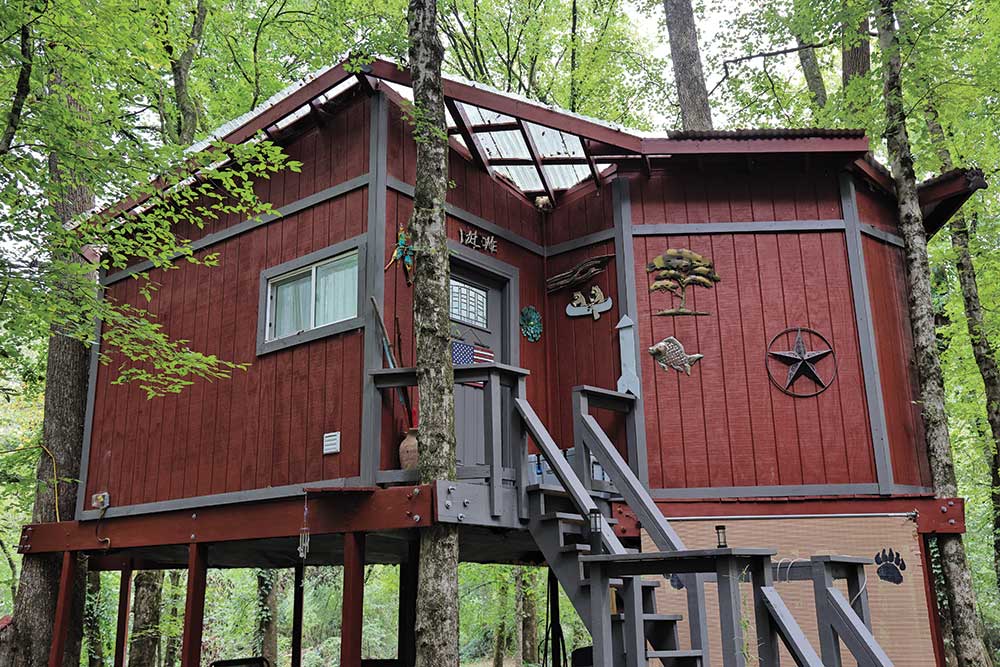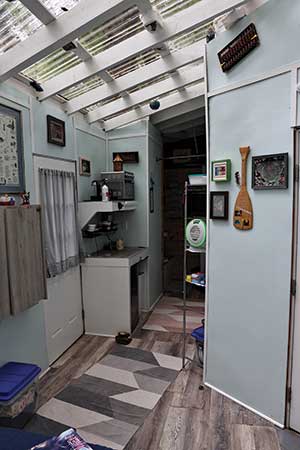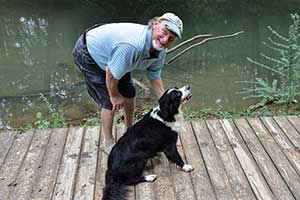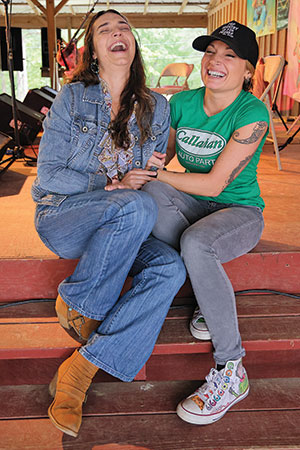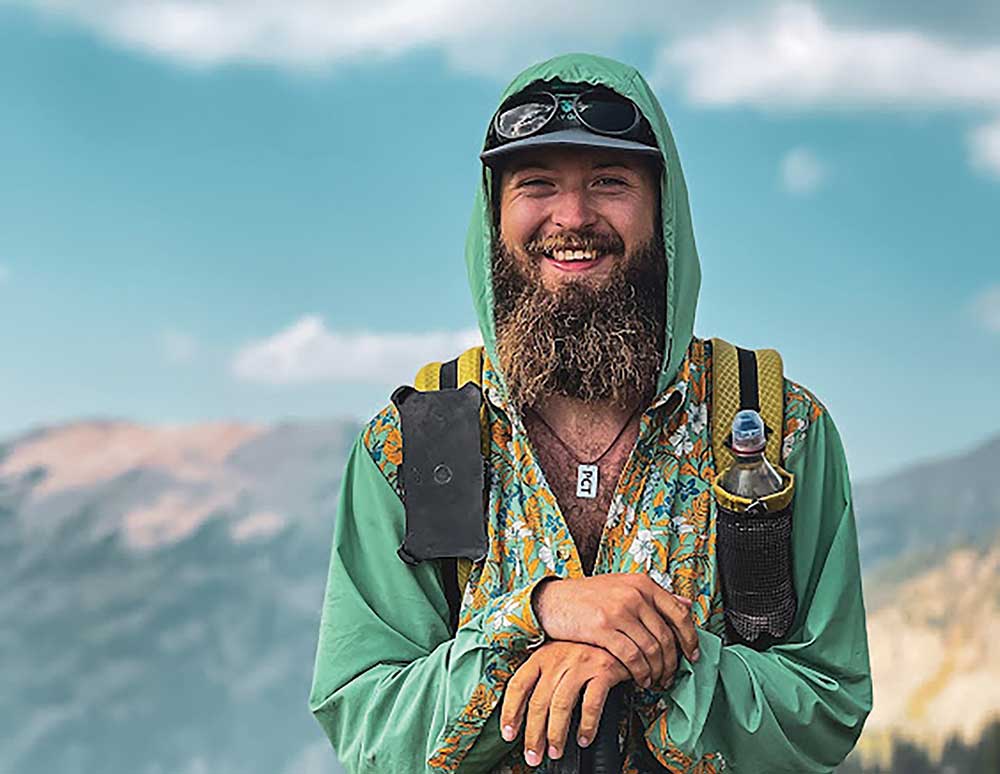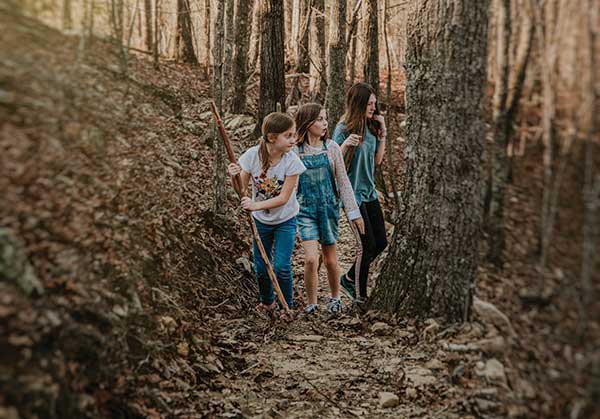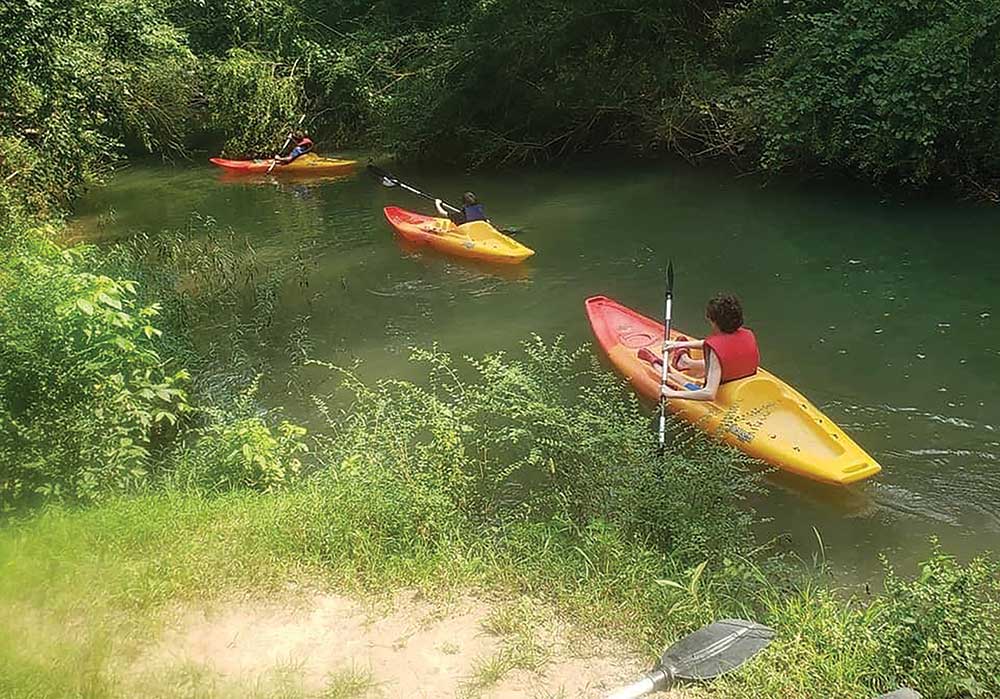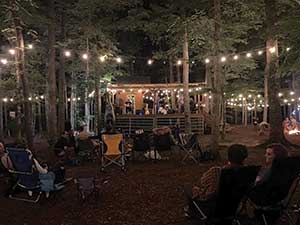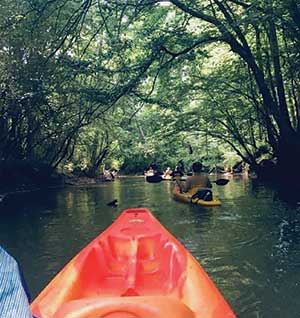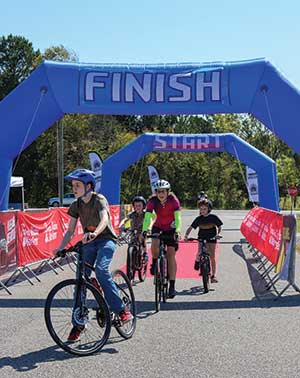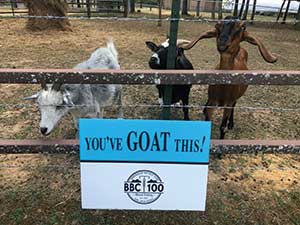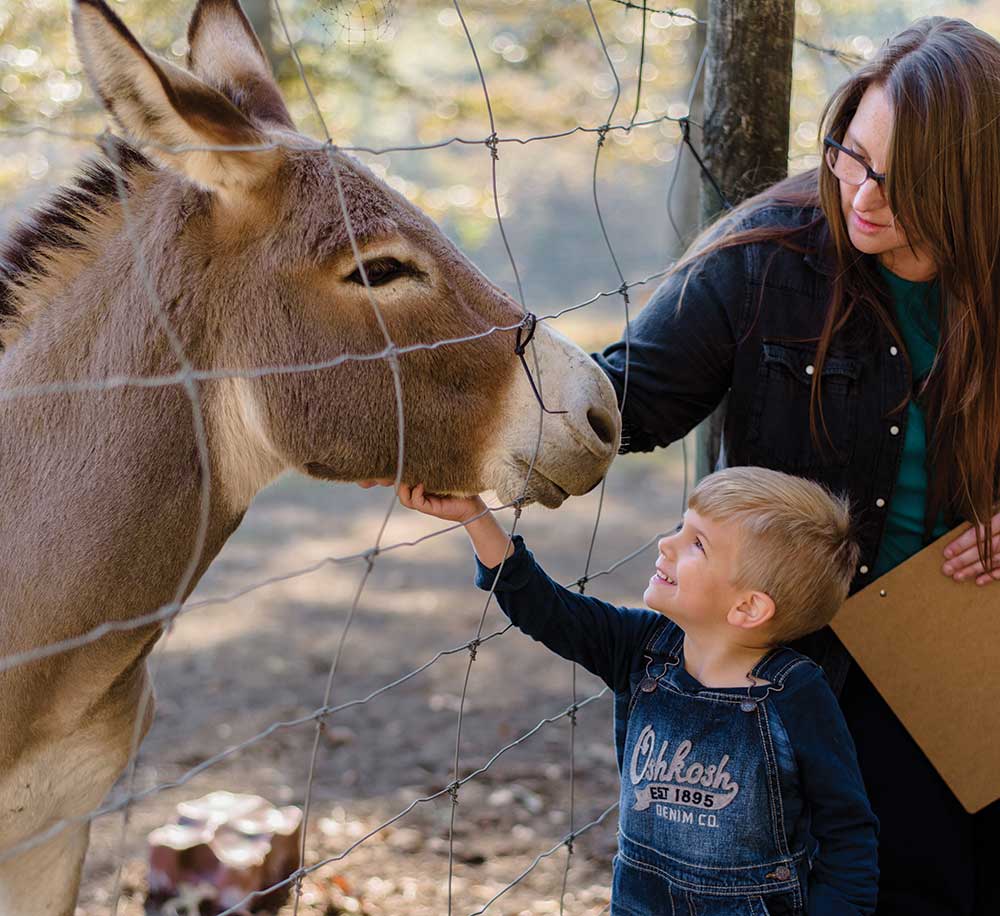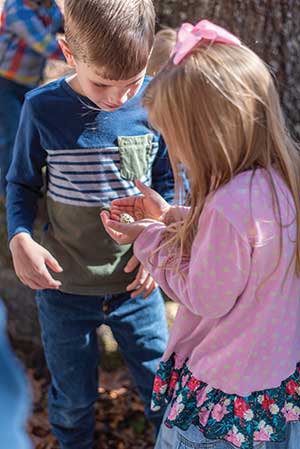Off the grid in a childhood dream
Story by Roxann Edsall
Photos by Richard Rybka
Whether it’s the spirit of adventure we remember from Swiss Family Robinson or the memories of reading the Magic Treehouse children’s books, thoughts of treehouses often elicit smiles and fond memories.
That sense of wonder and freedom, of resilience and self-reliance often makes us remember times long gone. A treehouse is pure childhood magic.
Now imagine that treehouse on the edge of a creek saturated in history, a place steeped in the natural beauty of woods and wildlife. Sitting on a small rustic overlook, you watch the water for movement. It could be fish, turtles, beaver or otter. Beyond the creek, you hear a noise and barely catch a glimpse of a doe and her fawn slipping back into the woods. It is transformative, experiencing the wonders of nature all around.
There is such a treehouse, and as a guest here, you’ll be immersed in nature throughout your stay. Even though it’s called Bear Claw Treehouse, you most likely won’t see a bear. You will see plenty of other wildlife, if you’re quiet enough, including turkey, beaver and eagles.
The last sign of a bear, though, was over 10 years ago. They say he did leave a distinct bear paw print in the mud at the edge of the creek. And, so, Bear Claw Treehouse began.
Situated in Springville between Barker Mountain and Washington Valley, this unique rental property is owned by Jim and Melany Harrelson. Featuring a translucent roof for stargazing and firefly viewing, this one-bedroom treehouse is simple, but outfitted with all the absolute necessities.
There’s a queen-sized bed and a kitchenette with an air fryer, microwave and coffee press. Guests can catch a hot shower in the 40-gallon oval tank from Tractor Supply with water provided by a Zodi shower pump.
The toilet facilities are two-fold. More delicate matters are dispersed by a pit latrine style leach system. There’s a freshly serviced port-a-potty for the more serious matters.
While they currently use a generator to power the lights and air conditioning for up to 10 hours a day, Jim Harrelson says things are about to be upgraded. “We have gotten clearance to get electricity hooked up at the treehouse,” says Harrelson. “I put in the order last week, so it’s coming soon.” Since there is no refrigerator and no running water, Harrelson keeps visitors stocked with both water and ice in coolers on the porch.
Dining alfresco is the order of the day here. Just 50 yards away, there is a grilling and eating platform near the creek. A sign nearby reminds visitors of the history that was made on the ground beneath their feet nearly five centuries before. One could almost imagine encampments of explorers and, later, soldiers eating their rations on these very banks.
Hernando DeSoto’s team of explorers is believed to have entered Alabama near Piedmont and traveled down the Coosa River on their quest for gold. DeSoto and his band of nearly 700 followed the Coosa through the state for several months before heading west to Mississippi. Bear Claw Treehouse sits on the edge of Big Canoe Creek, a tributary to the Coosa.
Because of its abundance of available natural resources, including food and water, historians believe those conquistadors would have fished and camped nearby.
Less than three centuries later, General Andrew Jackson’s forces likely fished and camped in the same area as they headed to the nearby Creek village of Littafatchee to battle the Red Sticks in the Creek War of 1813-1814.
“There is really a great spirit on this land. There’s just so much history here,” says Harrelson. It’s something he wishes he had known more about in 2013 when he tried to get the Animal Planet series, Treehouse Masters, to design and build it. The premise of the former reality TV show was that people who wanted to have treehouses built would submit applications and if the situations were interesting enough, they might be chosen to be one featured as an on-air build.
In 2012, the Harrelsons purchased seven acres and divided it into two plots. They built their own home on five acres and saved the adjacent two acres to build an income property later. As they contemplated what type of structure to build on the two-acre plot, they received the unwelcome news that they wouldn’t be able to have a septic system. Still believing the property was perfect to support the activities of outdoor enthusiasts, the idea for a treehouse was born.
Being a fan of Pete Nelson and his Treehouse Masters show already, Harrelson submitted his application with pictures of the land. The producer interviewed them on Zoom and got back to them later with the news that they did not make the cut, ending up 26th on the list that only needed 18 for the show’s broadcast season. “Had I known the full history of the land, I believe I would have done a better job of pitching it to them,” says Harrelson.
In 2019, with his own vision in mind, Harrelson framed and built the treehouse on weekends as he had time and money. Subcontractors came in to help with specialties he couldn’t do. In October of 2021, the Harrelsons hosted their first guests, a couple from Illinois who were coming to visit relatives.
Since then, the Harrelsons have listed the property on Airbnb, VRBO and Hipcamp and have had a steady stream of guests. Guests are encouraged to bring fishing gear and fish in the creek or take the available canoe for a long explore in the water.
Apparently, guests are taking that advice to heart, as evidenced by a recent guestbook entry that reads, “We enjoyed sunset on the nightfall porch, swimming and fishing in the creek and lazing in the hammock chair while the boys fished. We loved watching daybreak through the ceiling each morning!”
Sitting on that nightfall porch, Harrelson fights back tears as he recounts the difficult journey that brought him to this peaceful place. It was another story of lives changed by the string of tornadoes that tore through the state on April 27, 2011.
The same system that brought tornadoes to Cullman and Hackleburg and devastated parts of Tuscaloosa obliterated most of the Harrelson’s neighborhood in Pleasant Grove.
Thankful to be alive and eager to leave that chapter behind, the couple found a property off Highway 23 in Springville. That’s where they are today, on a beautiful little property in the same valley that, at first sight, took away the breath of one 17-year-old Jim Harrelson, as he made his way on Highway 59 on his senior trip from Long Beach, Mississippi, to Niagara Falls, Canada.
“I was so moved when I saw the beauty of this valley, I said I’d live here one day,” says Harrelson. And he does. He offers you the chance to do the same, two nights at a time, in the magical whimsy of a treehouse.














